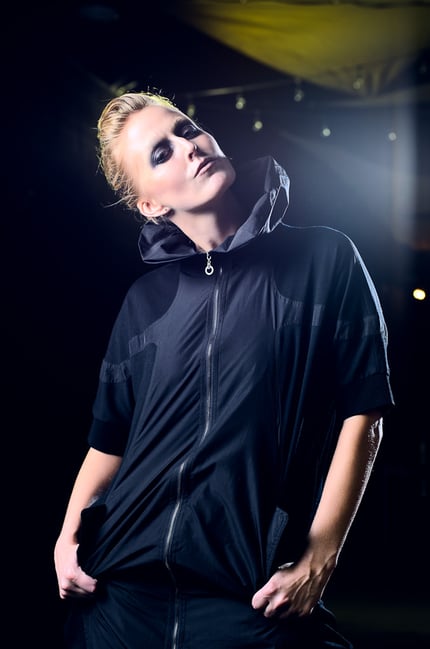شرح إعدادات إضاءة التصوير الفوتوغرافي: دليل المبتدئين
Photography Lighting Setups Explained: A Beginner’s Guide
الضوء هو كل شيء في التصوير الفوتوغرافي. قد يكون الأمر مبتذلاً، لكن بدون ضوء، لن تكون هناك صورة! في بعض الأحيان، تعتمد على الضوء الطبيعي؛ وفي أحيان أخرى، سيكون لديك المزيد من السيطرة. في هذه المقالة، سأشرح مجموعة متنوعة من إعدادات الإضاءة - بدءًا من تعديل الضوء الطبيعي وحتى إضافة الأضواء الخاصة بك إلى المشهد.
بغض النظر عن موضوعك أو تكوينك، فإن الطريقة التي يسلط بها الضوء على هدفك يمكن أن تؤدي إلى إنشاء الصورة أو كسرها. بعض أنواع التصوير الفوتوغرافي، مثل تصوير المناظر الطبيعية، عادة ما تكون تحت رحمة البيئة لإنتاج ضوء جيد. يجب أن يصبح المصورون الآخرون - مثل مصوري الاستوديو والمنتجات ومصوري الصور الشخصية - على دراية بتعديل الضوء. إنه ببساطة أمر لا مفر منه.
حتى كمصور فوتوغرافي للحياة البرية، أستخدم مجموعة متنوعة من إعدادات الإضاءة المختلفة. في أي وقت أقوم فيه بتصوير أهداف أصغر مثل الثعابين أو الضفادع (وهو الأمر الذي يحدث دائمًا بالنسبة لي)، فإن أول ما يخطر في ذهني كمصور هو الضوء. يمكن التلاعب بالضوء الطبيعي، ويمكن إلقاء الضوء الاصطناعي. أيهما يناسب الصورة التي ألتقطها؟ الإجابة على هذا السؤال هي المفتاح لالتقاط صور أفضل!
Light is everything in photography. It might be a cliché, but without light, there would be no image! Sometimes, you’re dependent on natural light; other times, you’ll have more control. In this article, I’ll explain a variety of lighting setups – from modifying natural light, to adding your own lights to a scene.
Regardless of your subject or composition, the way that light casts upon your subject can make or break an image. Some genres of photography, like landscape photography, are usually at the mercy of the environment to yield good light. Other photographers – like studio, product, and portrait photographers – must become familiar with modifying the light. It’s simply unavoidable.
Even as a wildlife photographer, I use a variety of different lighting setups. Any time that I’m photographing smaller subjects like snakes or frogs (which, for me, is all the time) my first thought as a photographer is about light. Natural light can be manipulated, and artificial light can be cast. Which one suits the photo I’m taking? Answering that question is the key to taking better photos!
Photography Lighting Setups Explained: A Beginner’s Guide
الضوء هو كل شيء في التصوير الفوتوغرافي. قد يكون الأمر مبتذلاً، لكن بدون ضوء، لن تكون هناك صورة! في بعض الأحيان، تعتمد على الضوء الطبيعي؛ وفي أحيان أخرى، سيكون لديك المزيد من السيطرة. في هذه المقالة، سأشرح مجموعة متنوعة من إعدادات الإضاءة - بدءًا من تعديل الضوء الطبيعي وحتى إضافة الأضواء الخاصة بك إلى المشهد.
بغض النظر عن موضوعك أو تكوينك، فإن الطريقة التي يسلط بها الضوء على هدفك يمكن أن تؤدي إلى إنشاء الصورة أو كسرها. بعض أنواع التصوير الفوتوغرافي، مثل تصوير المناظر الطبيعية، عادة ما تكون تحت رحمة البيئة لإنتاج ضوء جيد. يجب أن يصبح المصورون الآخرون - مثل مصوري الاستوديو والمنتجات ومصوري الصور الشخصية - على دراية بتعديل الضوء. إنه ببساطة أمر لا مفر منه.
حتى كمصور فوتوغرافي للحياة البرية، أستخدم مجموعة متنوعة من إعدادات الإضاءة المختلفة. في أي وقت أقوم فيه بتصوير أهداف أصغر مثل الثعابين أو الضفادع (وهو الأمر الذي يحدث دائمًا بالنسبة لي)، فإن أول ما يخطر في ذهني كمصور هو الضوء. يمكن التلاعب بالضوء الطبيعي، ويمكن إلقاء الضوء الاصطناعي. أيهما يناسب الصورة التي ألتقطها؟ الإجابة على هذا السؤال هي المفتاح لالتقاط صور أفضل!
Light is everything in photography. It might be a cliché, but without light, there would be no image! Sometimes, you’re dependent on natural light; other times, you’ll have more control. In this article, I’ll explain a variety of lighting setups – from modifying natural light, to adding your own lights to a scene.
Regardless of your subject or composition, the way that light casts upon your subject can make or break an image. Some genres of photography, like landscape photography, are usually at the mercy of the environment to yield good light. Other photographers – like studio, product, and portrait photographers – must become familiar with modifying the light. It’s simply unavoidable.
Even as a wildlife photographer, I use a variety of different lighting setups. Any time that I’m photographing smaller subjects like snakes or frogs (which, for me, is all the time) my first thought as a photographer is about light. Natural light can be manipulated, and artificial light can be cast. Which one suits the photo I’m taking? Answering that question is the key to taking better photos!




 E-M1 + OLYMPUS M.9-18mm F4-5.6 @ 9mm, ISO 1250, 1/500, f/11.0
E-M1 + OLYMPUS M.9-18mm F4-5.6 @ 9mm, ISO 1250, 1/500, f/11.0


 DC-G9 + OLYMPUS M.60mm F2.8 Macro @ 60mm, ISO 400, 1/250, f/4.0
DC-G9 + OLYMPUS M.60mm F2.8 Macro @ 60mm, ISO 400, 1/250, f/4.0
 DC-G9 + OLYMPUS M.9-18mm F4-5.6 @ 13mm, ISO 160, 1/250, f/5.6
DC-G9 + OLYMPUS M.9-18mm F4-5.6 @ 13mm, ISO 160, 1/250, f/5.6




تعليق